Hydrostatic transmissions are a core component in many John Deere machines, offering the advantage of smooth power delivery and variable speed control without the need for gear changes. However, like any mechanical system, they can experience problems that can affect the performance and operation of your equipment. Recognizing the symptoms of common hydrostatic transmission issues in John Deere equipment is the first step toward maintaining their functionality and longevity.
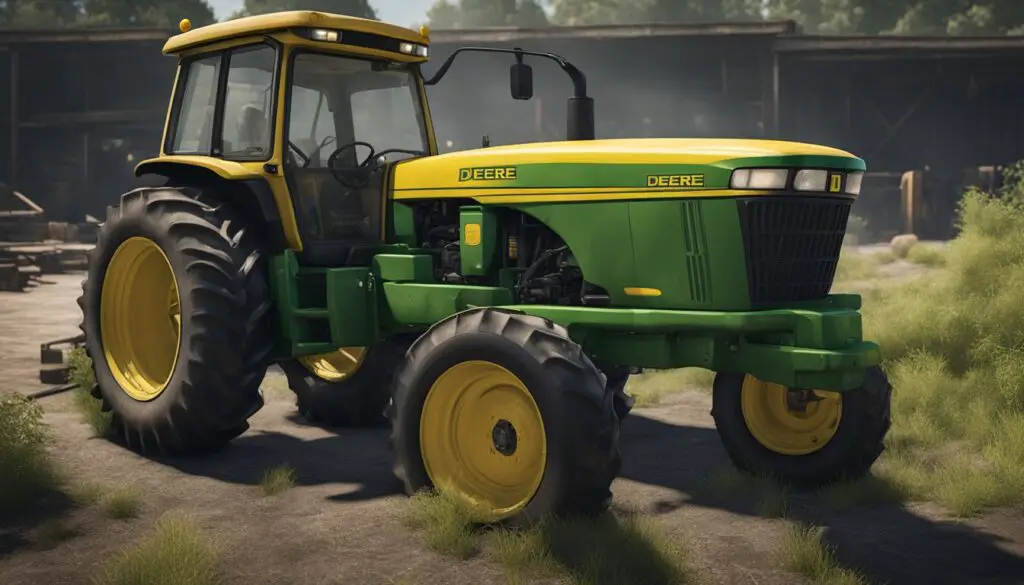
When a John Deere tractor or lawn mower doesn’t respond as it should, the hydrostatic transmission could be the culprit. Symptoms of malfunctioning can include sluggish acceleration, jerky movements, and even complete failure to engage. These issues could be due to a range of causes, from low hydraulic fluid levels and air leaks in the system to worn seals and bearings. Regular maintenance, including checking oil levels, cleaning filters, and inspecting components for wear, is critical in preventing these problems from escalating.
Key Takeaways
- Hydrostatic transmissions are integral to the smooth operation of John Deere machinery.
- Symptoms of hydrostatic transmission problems can range from sluggish response to complete failure.
- Preventative maintenance is key to avoiding common transmission issues.
Understanding Hydrostatic Transmissions
Your piece of machinery relies heavily on its hydrostatic transmission system; keep in mind that a well-maintained system is key to a smooth, powerful performance.
Basics of Hydrostatic Transmissions
Hydrostatic transmissions in your John Deere equipment allow you to control speed and direction simply. Unlike traditional mechanical transmissions, hydrostatic systems use fluids to transfer power from the engine to the wheels. This design helps to provide a seamless and smooth operation, which is essential for tasks that need precise movements.
Components of a Hydrostatic Transmission
The main components of a hydrostatic transmission include:
- Pump: Converts mechanical power from the engine into hydraulic pressure.
- Motor: Receives the hydraulic pressure to generate rotation and drive.
- Hydraulic fluid: The “lifeblood” of the system, maintaining pressure and transferring power.
- Filters: Keep the hydraulic fluid free from contaminants.
- Reservoir: Holds the hydraulic fluid.
- Hoses and tubes: Ensure correct fluid flow between components.
Functioning of Hydrostatic Transmissions
Your hydrostatic transmission’s functioning centers on maintaining the right pressure within the hydraulic system. When you push the pedal, the pump changes the fluid flow, adjusting the motor’s speed and direction. This process allows for your equipment’s responsive and variable performance. It’s crucial to keep all components in good condition to avoid hydrostatic transmission problems that can affect your machinery’s functioning.
Common Hydrostatic Transmission Problems
When it comes to maintaining your John Deere equipment, understanding the common hydrostatic transmission problems is crucial. This knowledge can save you time and money, ensuring your machinery stays operational when you need it most.
Low Fluid Levels and Leakages
Your John Deere’s transmission depends on hydraulic fluid for smooth operation. Low fluid levels can lead to erratic performance and even transmission failure. Check for fluid leakages regularly, as they can be a sign of worn-out seals or cracks in the system.
- Signs of fluid leakage or low fluid levels:
- Hesitation during acceleration.
- Difficulty in changing gears.
Overheating Issues
Overheating can be detrimental to your transmission’s health. It’s typically caused by a lack of fluid, but can also arise from contaminated hydraulic fluid or faulty components overheating your machine. Ensure your transmission is not running too hot and the cooling system is functioning properly.
- Symptoms of an overheating transmission:
- Sluggish response times.
- Sudden loss of power.
Slipping and Steering Challenges
When the gears in your hydrostatic transmission slip, it’s often a sign that the transmission is under stress, possibly due to low fluid levels or a faulty clutch. This can manifest as a challenge in steering or a change in the mower’s speed without any input from you.
- Indicators that your transmission might be slipping:
- Jerky or unpredictable acceleration.
- Difficulty controlling direction or steering.
Unusual Noises and Vibration
Listen for any unusual noises like whining, buzzing, or grinding as these can indicate a problem within the hydrostatic system. Vibrations may also point toward electrical issues or a loose part that could impact your transmission’s performance.
- Common sounds and sensations to be alert for:
- High-pitched whining sound when in use.
- Unexpected vibrations during operation.
Diagnosing and Troubleshooting
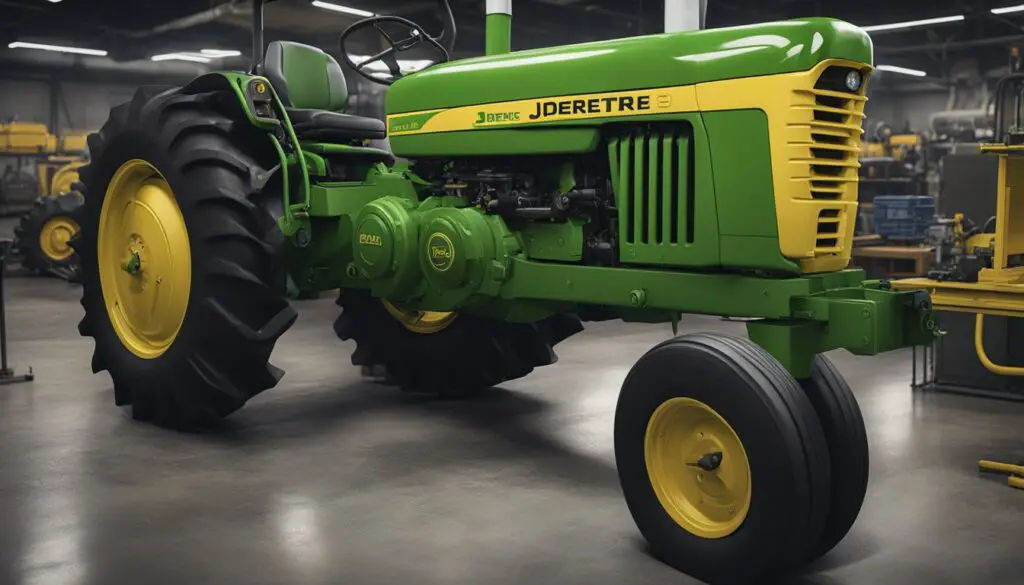
When your John Deere hydrostatic transmission begins to show signs of trouble, a systematic approach to diagnosing and troubleshooting can help pinpoint the problem. Staying attentive to the indicators of transmission issues and following guided steps can save time and prevent further machine damage.
Signs of Transmission Issues
Your John Deere hydrostatic transmission may display several symptoms that signal trouble:
- Poor response time: A lag in the machine’s reaction to control inputs can indicate low hydraulic fluid levels or internally worn-out transaxle components.
- Overheating system: This often manifests in an unexpected loss of power, which might point to a flawed cooling process or insufficient oil in the reservoir.
- Unusual noises: Grinding or whining noises could suggest a faulty mechanical part in need of attention.
Troubleshooting Steps
Here’s how you can troubleshoot the common transmission problems:
- Check fluid levels: Ensure that the hydraulic reservoir is not running low and top it up if necessary.
- Inspect the filter: A clogged transmission filter could hamper fluid flow, leading to various issues.
- Look for leaks: Examine hoses and seals for any signs of leakage which could lead to a drop in fluid levels.
- Electrical Check: Review all electrical connections as electrical issues can often mimic transmission problems.
- Operational Test: With the engine idling, engage the transmission control lever to observe the response and listen for any irregular sounds.
When to Seek Professional Help
- If basic troubleshooting does not resolve the issue or you identify a potentially faulty part, it may be time to consult a professional.
- Overheating and internal damage are serious concerns that typically require specialized tools and expertise; don’t hesitate to call for expert service in these cases.
- For complex electrical issues that can’t be easily diagnosed at home, seeking professional help ensures accurate repairs and prevents further damage to the system.
Maintenance and Prevention Techniques
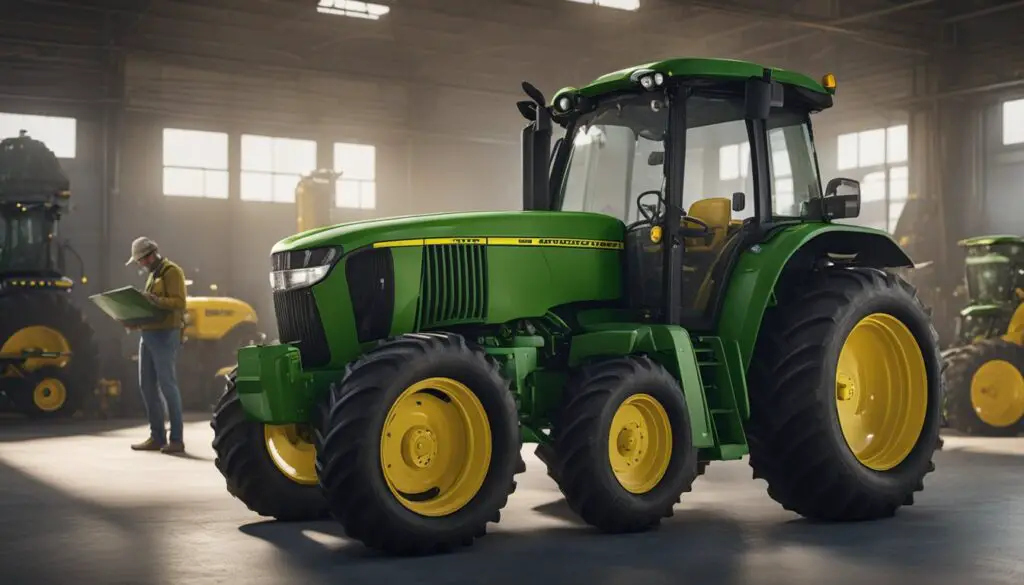
Keeping your John Deere hydrostatic transmission in prime condition prevents costly repairs down the line. Regular maintenance, proper fluid management, and timely part replacements are fundamental for the longevity of your equipment’s transmission system.
Regular Maintenance Schedule
Your John Deere equipment thrives on consistency. Adhere to a regular maintenance schedule that includes the following:
- Inspecting and cleaning the transmission filter to avoid clogs that can reduce hydraulic pressure.
- Checking the transmission pump and hydraulic pump for signs of wear or damage.
- Ensuring all bearings are properly lubricated to minimize friction and wear.
- Looking for signs of transmission fluid leakage, which can lead to low pressure and overheating.
Note: Always refer to your owner’s manual for the specific maintenance timeline for your tractor model.
Checking and Maintaining Fluid Levels
Maintaining fluid levels is critical for the smooth operation of your hydrostatic transmission. Here’s how to stay on top of it:
- Verify the hydraulic oil level regularly, and top off with the recommended 10w30 engine oil if needed.
- Watch out for air bubbles in the hydraulic system as they can cause faulty clutch operation. If present, you may need to purge the system.
- Remember that driving belts and pressurized fluid work hand in hand; low hydraulic pressure can result from a worn-out transmission pump or insufficient fluid.
Replacing Worn-Out Parts
Proactive replacement of parts can save you from unexpected equipment failure:
- Swap out damaged parts like worn drive belts and degreased bearings immediately.
- Replace the transmission filter and gaskets if you spot signs of excessive wear or damage.
- Regularly inspect hoses for cracks or wear, which can lead to leaks and loss of pressure.
By staying vigilant with these techniques, you’ll ensure that your John Deere’s hydrostatic transmission operates efficiently, saving you from future headaches and keeping your equipment running smoothly for years to come.
Understanding Transmission Problems in Specific John Deere Models
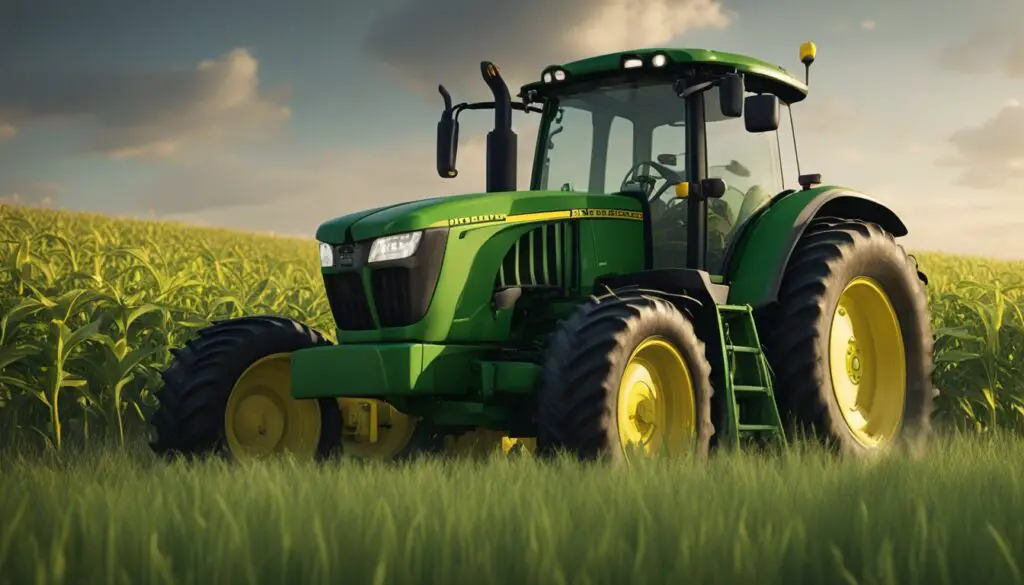
When navigating John Deere hydrostatic transmission issues, it’s essential to discern the nuances between different models to accurately diagnose and address concerns.
John Deere 100 Series Transmission Issues
The John Deere 100 Series is known for its versatility in lawn maintenance but may encounter difficulties such as lack of power or lack of lubrication. Pay close attention to your model’s oil level and quality to prevent low oil pressure, which is a frequent culprit behind performance issues.
- Common Symptoms: Sluggish movement, difficulty climbing hills.
- Possible Causes:
- Low fluid levels
- Air trapped in the system
John Deere L120 Model Concerns
Your John Deere L120 mower might suffer from jerky or unresponsive behavior, potentially due to air being trapped in the system or other hydrostatic transmission problems. Regular maintenance is key, with an emphasis on inspecting the brake pedal and gearbox.
- Regular Checks:
- Hydraulic fluid levels
- Transmission drive belt condition
John Deere LT155 Common Challenges
The LT155 is frequently employed for its consistency on smaller properties yet can display common hydrostatic transmission problems like hesitation or variance in speed. Low oil pressure can exacerbate these issues, especially during extensive use in farming activities.
- Proactive Measures: Ensuring proper lubrication, fluid level checks
- Typical Problems: Fluctuating speed, delayed response time
Issues with John Deere 455
With the John Deere 455, a much-cherished model for its power in various landscapes, transmission troubles can be rather costly. One needs to scrutinize for low oil and proper transmission function, especially when operating a zero-turn mower which demands precision.
- Focus Areas for Maintenance: Hoses, seals, gaskets
- Key Indicators of Trouble:
- Unusual noise from the transmission
- Difficulty in shifting gears
Addressing the specific issues of each model with targeted maintenance can greatly improve the longevity and performance of your John Deere equipment.
Frequently Asked Questions
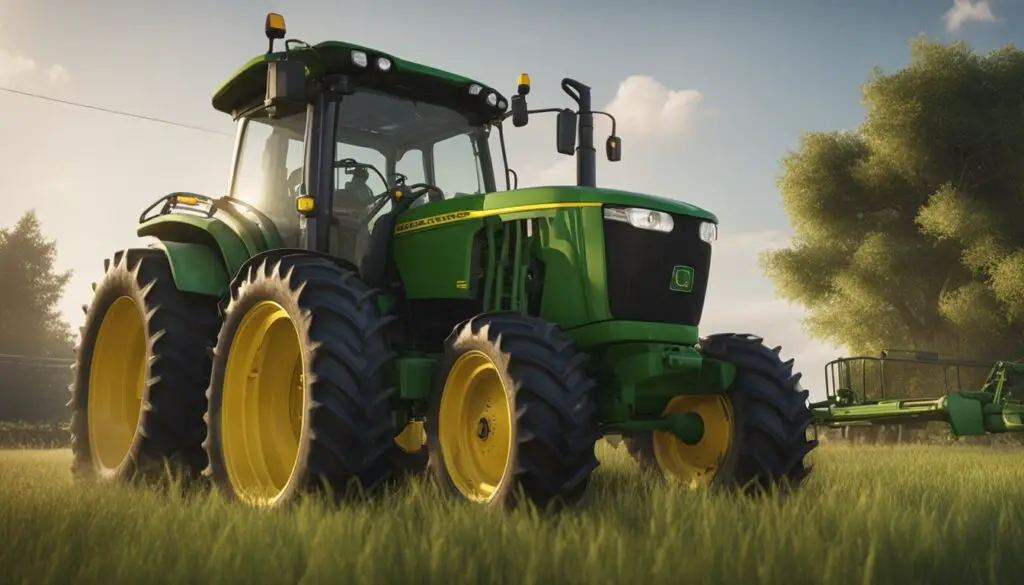
In this section, you’ll find common questions and straightforward answers to understand and address issues with your John Deere hydrostatic transmission.
What are common symptoms indicating an issue with a hydrostatic transmission?
You may notice erratic tractor performance, such as sluggish acceleration, jerky movements, or a complete lack of engagement when experiencing hydrostatic transmission issues.
How can I adjust a hydrostatic transmission in a John Deere tractor?
Adjusting a hydrostatic transmission often involves checking and setting the correct fluid levels, ensuring the drive belts have proper tension, and possibly calibrating the linkage or control rods according to the tractor’s manual.
What steps should I follow to diagnose a faulty hydrostatic transmission?
Begin diagnosis by inspecting the hydraulic fluid levels and quality. Then, check for leaks, assess the condition of hoses, belts, and filters, and listen for unusual noises that can indicate internal problems.
Where can I find a diagram for a John Deere hydrostatic transmission?
A diagram for your John Deere hydrostatic transmission can typically be found in the service manual for your specific model, or you can contact a John Deere dealer for the appropriate diagrams.
What are the typical steps for repairing a hydrostatic transmission?
Repair often starts with a thorough inspection to identify the problem. From there, you may need to replace seals, gaskets, filters, or damaged components, followed by refilling with the correct type of hydraulic fluid.
How do I troubleshoot a hydrostatic transmission that won’t engage?
If your transmission won’t engage, check the hydraulic fluid level and the condition of the drive belt. Also, ensure that the transmission is not in ‘bypass’ mode, which allows you to push the tractor without the engine running.

Leave a Reply